Installing an off-grid septic system with the help of a professional may cost you a lot.
So why not make a septic system all by yourself this weekend?
You must be puzzled and questioning yourself, “Can I build my own septic system?”
Well, yes, you can!
Here we will be talking about how to make a DIY septic system for the cabin. We have also shared some of the best ideas and alternatives to implement without breaking your budget.
Before you start the actual construction work, it is always a nice idea to evaluate your job. So the question the main is “What to do before building a septic system?” and not “how to build a septic system?”
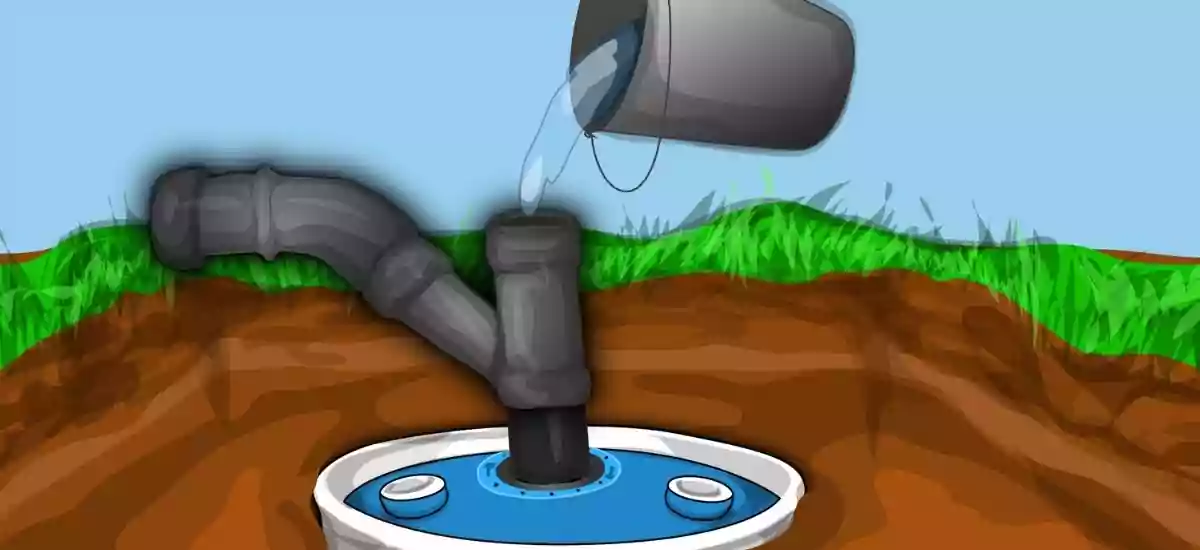
Things To Consider Before Constructing A Septic Tank
Here are few things, you need to keep in your mind before beginning your work:
1. Get Approval Before Digging
Go and check the county government offices and local health departments and ask for permission to build an off-grid septic system for a tiny house.
Proceed further if the location is right, note down and special permits and requirements.
2. Creating The Drawings
Create a DIY septic system diagram to meet the needs of the local health department. The details of the sketch may vary from region to region.
Once you have made a blueprint, ask the health organization to determine if they want to make any changes.
3. Plan And Evaluate Your Site Early
Give the soil for testing to health departments and planning boards to test. And if they approve the soil, then you can proceed further.
4. DIY Perc Testing
Dig a six-foot deep hole and pour a bucket of water to see how much time it takes to soak up the water.

5. Drainfield Trench Size
To establish the flow rate, you will have to count:
- The number of people in the house.
- The number of bedrooms in your cabin.
- The normal use of water.
These things will determine the drain field size. And if you face any problem while selecting the drain field size, you can take help from a professional.
6. Size Of The Septic Tank
Now, determine the dimensions of the tank by evaluating the size of the property.
After pre-planning everything, it is time to build your own Homemade Septic Tank 55 Gallon Drum.
How Do You Build A Small Septic System?
While in construction, a small septic system can get damaged if you don’t do it properly. And this is a big project, and even a tiny mistake can ruin everything.
So here is a step-by-step guide to how you can do it:
Step 1: Dig A Hole
Once you get permits from all the necessary agencies and boards, you can start building a septic system.
Make sure to dig a hole of ten feet away from the main structure that needs a septic tank.
Also, dig another hole at least eight feet deep to avoid blockage and to achieve good gravity flow when you flush.
Step 2: Dig A Trench
Secondly, start digging a trench which should lead to the septic tank. You will also have to dig another trench for the distribution box and the pipe.
Make sure to dig it directly two feet down and ten feet in length from the structure and in front of the hole. That will be your leach line.
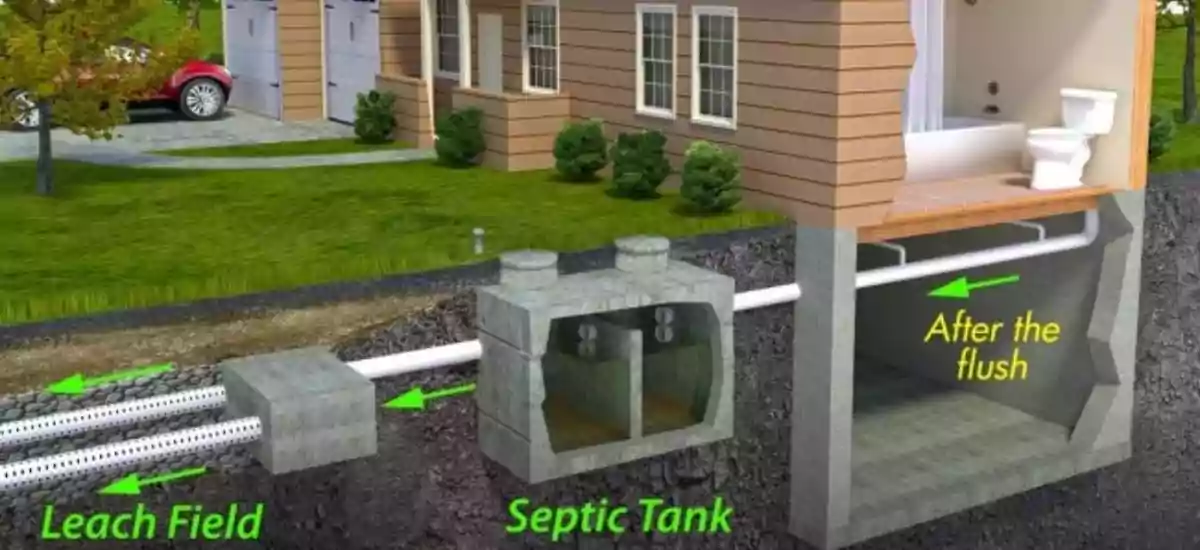
One more trench will be needed for the lines that will run to the field system. Furthermore, you will have to create an incline that is at least 1/8 inch for each foot. This incline will be from your house to the septic tank.
Also, you want to create more trenches with slight inclines, and it is okay if they aren’t perfect.
Now, let’s move to the next step of creating an off-grid septic system.
Step 3: Cut A Hole In The Plastic Barrel
Get a jigsaw and start cutting a hole of four inches in the side and below the top of the plastic barrel.
You need to do that to fit the leach line, which is a 3-inch-diameter and 10-foot-long PVC pipe.
Make sure the hole is full enough for the PVC pipe. If it is not, then measure the size of the pipe and dig the hole accordingly.
Step 4: Install The Septic System 55-Gallon Drum
For the DIY septic system, 55-gallon drums should be used. So place the plastic barrel into the hole.
Make sure to keep it very gently and slowly with extra care to avoid any problem. Once you do it, fit the PVC leach line pipe.
Do not forget to cover the leach line with plastic as well and along with a thick layer of cinders. Now, it is time to backfill the leach line by using the dirt you removed while digging the hole and trench.
Ensure that the pipes from the house do not slope the wrong way. Little slopy is perfect, but too much of it can ruin your DIY.
Wondering how?

Well, if the slope is not enough, the water won’t flow, and if the water runs fast in a sloppy, then waste will get stuck.
Step 5: Lay Pipe
In the fifth step of building a DIY septic system for a tiny house, fit the ten-foot section of solid PVC pipes from the structure into the bunghole at the top of the drum or barrel.
Then, cover the drum lid or the barrel with plastic. Next, you can use the dirt you removed while digging the hole and trench to backfill the leach line.
After checking whether the tank is in place, you will need to lay down the line from the tank into the diverter box. Then, you will have to lay another line to drain the field. Make sure the slope of the lines is about 1/64 inch.
Step 6: Finish It Up
In the sixth and the final step of building off the grid septic system, you can now place a layer of gravel down.
Then attach or put down your perforated PVC to the board and check its level. This particular process is for those who use gravel for the drain field. Before putting it to use, make sure to test the DIY septic system.
Then, later on, you can start enjoying your newly created off-grid septic tank.
Are you dealing with a problem while installing a homemade septic system for the cabin?
Well, you may run into various situations where you cannot install a DIY septic system for cabin. But luckily, there are plenty of choices to pick from if you are facing a problem.
What Is The Alternative To A Septic Tank?
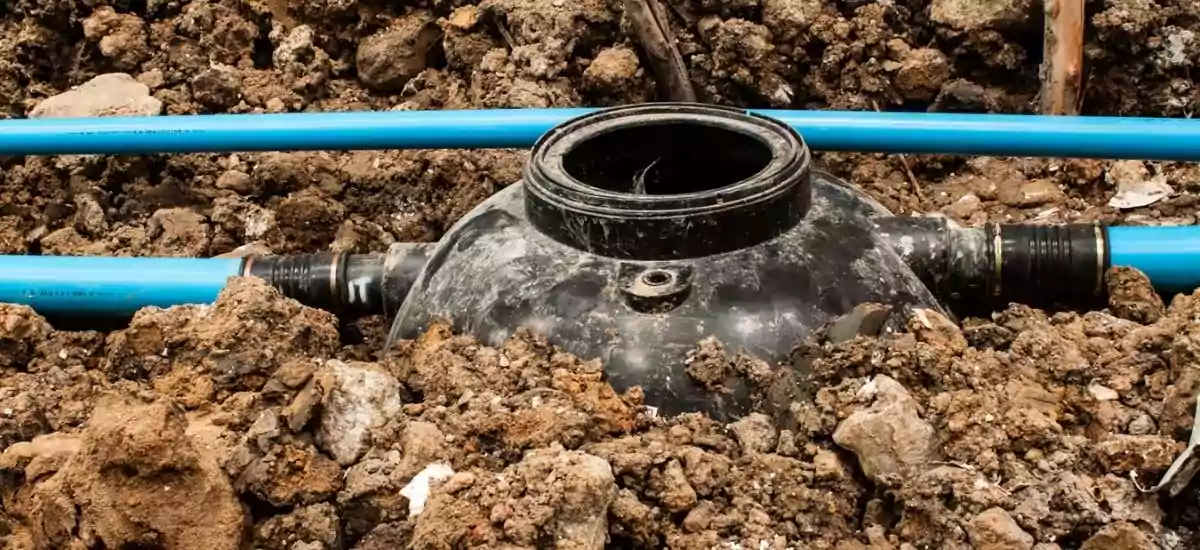
You are all set to install a septic tank, but wait!
What if you run into issues related to soil, forest preserve, watershed, bedrock, and much more?
Many rural homes are unable to install a proper conventional sewage system. But thankfully, we have discovered a few alternative septic systems that can help you in the scenarios mentioned above.
The types of alternative septic systems are listed below:
1. Mound Systems
Is the soil around your cabin too shallow or too dense? Is your water table too high?
Well, then a small septic system for the cabin won’t be useful for you. So you can try mound systems as the next option.
Although they require more maintenance and are costlier than conventional systems, these are some of the best alternatives.
Unlike off-grid septic tanks, they are built above the ground, which includes an extra component called a pump chamber that separates effluent from the scum and sludge.
2. Pressurized Dosing
The next alternative is a pressurized dosing system which distributes the effluent into the leach field by using pressure. This system exactly works like its name describes it.
Its distribution method makes this option best for rehabilitating a leach field if you have experienced a failure in creating a septic tank for a tiny house.
Wanna know why it is best?
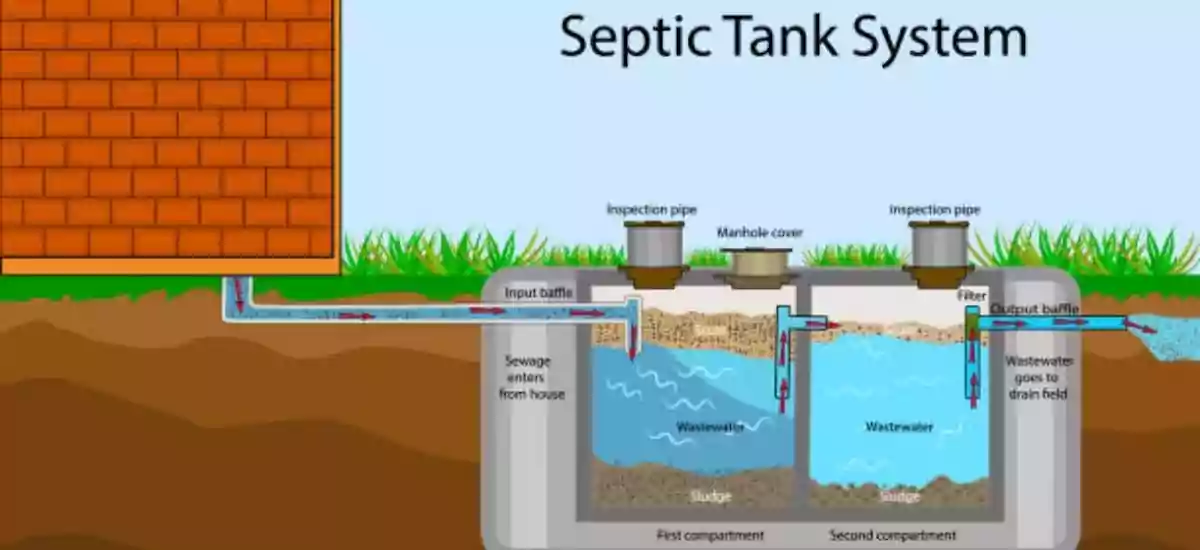
The pressurized dozing method only focuses on the dispersal of effluent into the mud.
3. Sand Filter
As the name suggests, this alternative for a small septic tank for the cabin purifies and gets rid of toxins from wastewater by using sand.
The sand filter septic system incorporates oxygen into its system to remove pathogens. And this procedure takes place in a sealed chamber, which you can construct below or above the ground.
Many small homeowners opt for this alternative because it works well in environmentally sensitive areas.
4. Aerobic Treatment System (ATS)
The anaerobic treatment system is yet another alternative to the tiny house septic system. It is quite similar to the sand filter treatment system above and incorporates oxygen into the treatment tank with an air pump.
The air pump’s duty is to pull air from the atmosphere into the septic tank. Furthermore, the additional oxygen stimulates natural bacterial activity and cleans the effluent.
Some sources reveal that this system applies the same technology as big sewage treatment plants, but on a smaller scale. If the off-grid septic systems do not work for people, then they can use this method.
Many people use this in rural areas, small homes, and single residences. So instead of following a DIY septic system for your retreat property, you can try this system.
So these were some of the most used alternatives for septic systems. If you are looking for more alternatives, then you can try:
- Drip Distribution/Irrigation
- Constructed Wetland System
- Waterless Systems
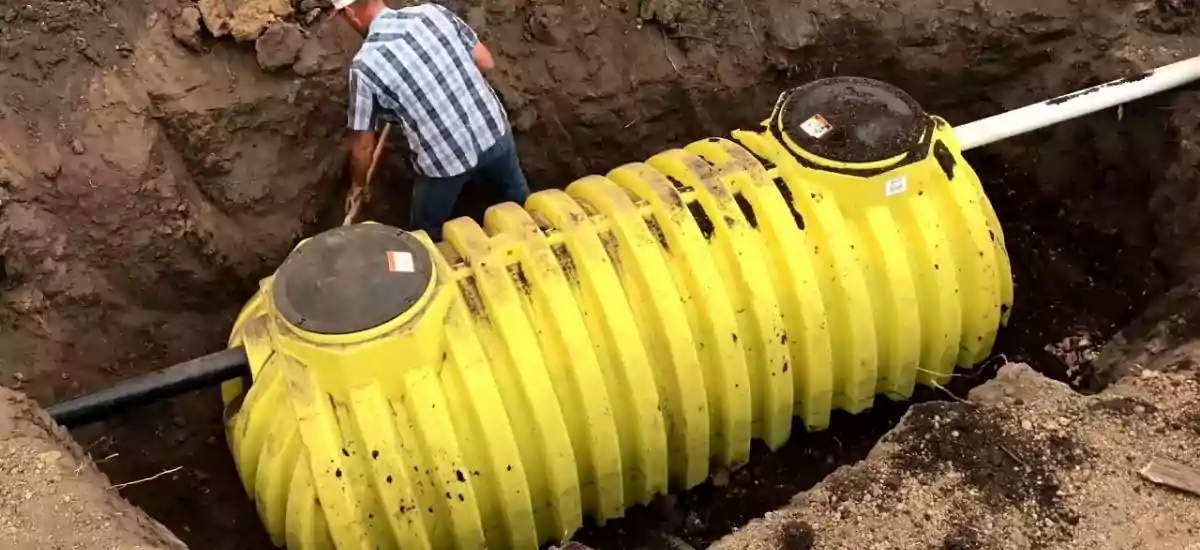
Now, you must be thinking, “What is the cheapest septic system?” Then let’s move forward and check out the cost related to it in the next section.
Cost Of A DIY Septic System
If you are looking for the cheapest septic system, then there is simply no easy method to find one because the price of the septic system depends on various factors such as:
- Where are you installing it?
- What is the current age of the system?
- The difficulty you are facing with extracting the current system.
- At what time of the year do you want to install the system?
- How to know if it’s a replacement or a new installation?
- How quickly do you want to install the system?
These are some of the questions you will have to answer before you find a quote for the system that will be a little bit close to your budget.
Our advice:
Before settling for one, make sure to search on the internet for the best system with the lowest prices or reasonable prices. But that doesn’t mean you should go for the lowest bid.
Compare the prices with its features and see if it matches your cabin environment. If you don’t know the overall price of the system, then don’t worry, we have listed all the details below.
According to the sources, conventional septic systems cost around $3,000. But if you think you can’t afford it, you can opt for a DIY septic system.
Your do-it-yourself project can save a couple of your bucks, and trust us, it will be as safe as an installed system by an expert. So to determine the retail price of your DIY project, you will have to check out the cost of the building materials like piles, distribution boxes, drain field, and much more.
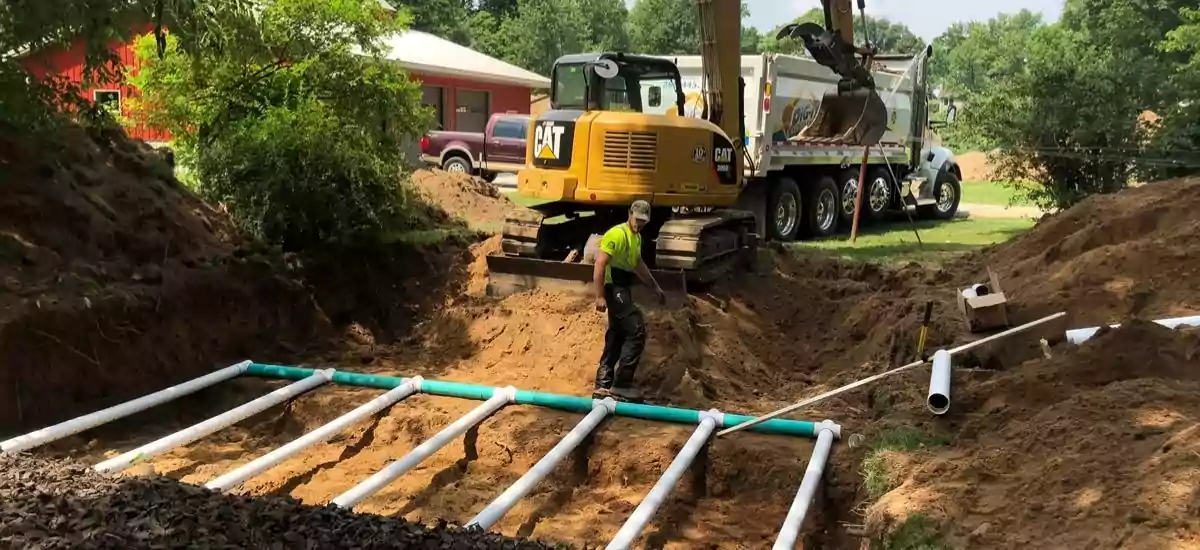
The prices may vary from one hardware store to another, so compare the prices and save a couple of your bucks.
Conclusion
A homemade septic system for the cabin is one cost-saving project for DIYers. If you are a beginner, then don’t worry because we have listed easy steps and techniques. All you have to do is follow the above instructions and match the requirements with the available options and the cost of the materials for this job.
Also, make sure that after creating your new septic system, take care of your land and inspect everything daily. Furthermore, do not drive over or put heavy machinery on the land that houses the septic tank. Stay tuned for more updates.
Good luck with your DIY project!
Read Also – How To Make A DIY Splash Pad
